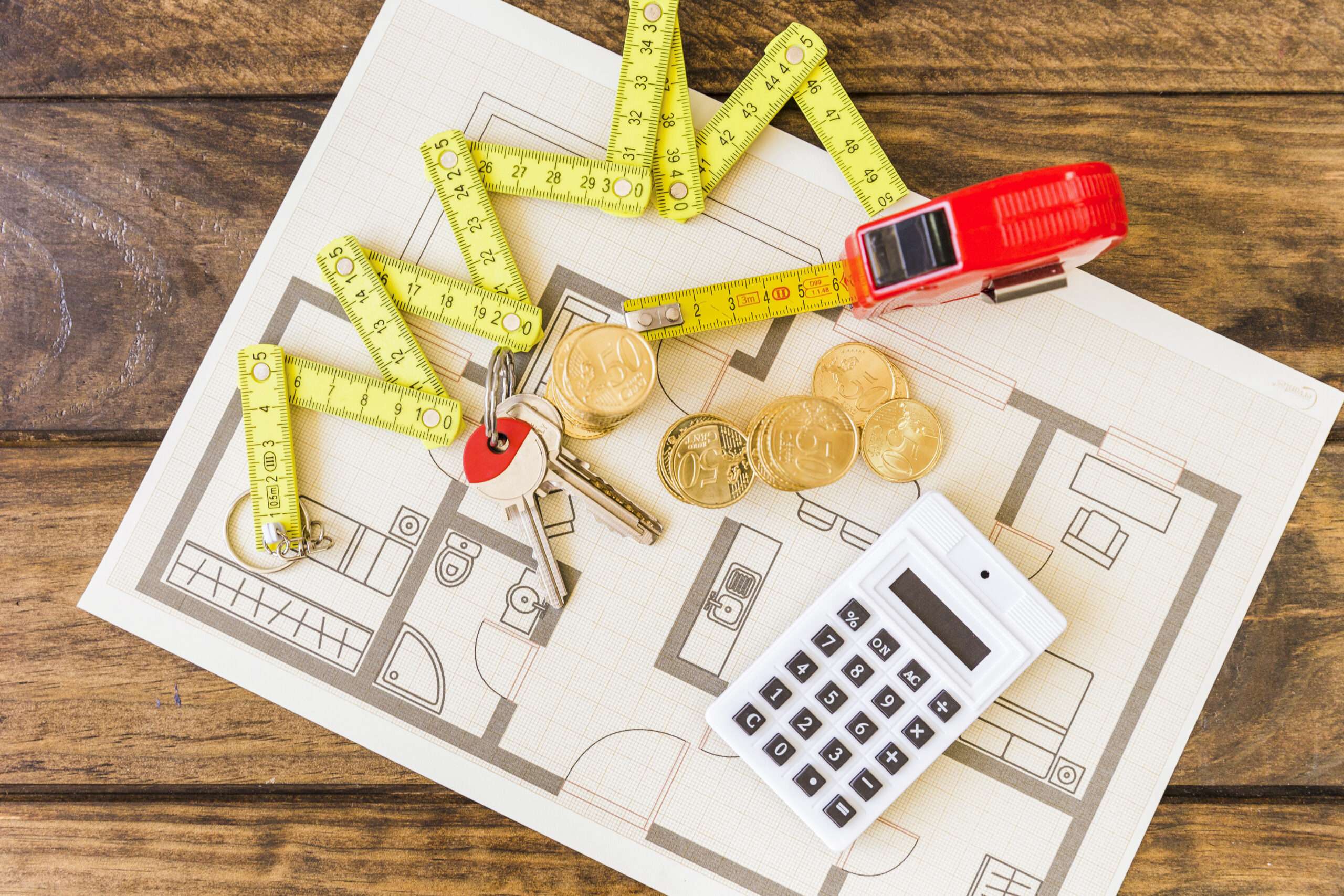Financing a metal building can seem daunting, but with the right approach, you can secure the funds you need to bring your project to life. This comprehensive guide explores various financing options, factors to consider, and steps to take to secure the best deal for your metal building project.

Financing Options for Metal Buildings
Traditional Loan Options
Banks and Credit Unions:
- Competitive Rates and Terms: Banks and credit unions are established lenders known for offering competitive interest rates and loan terms, especially for borrowers with a strong credit history and existing relationships. These institutions offer a variety of loan products, so you can potentially find a loan that aligns well with your specific project needs and budget.
- Existing Relationship Advantage: If you already have a banking relationship with a particular institution, you may benefit from more favorable loan terms or streamlined application processes. Existing account holders may qualify for lower interest rates or have access to special programs not offered to the general public.
- Credit Score and Collateral Requirements: Qualifying for a traditional loan from a bank or credit union typically requires a good credit score (generally above 670) and collateral. Collateral is an asset used to secure the loan, such as land, another building, or investment accounts. The type and value of collateral will impact the loan amount you qualify for and the interest rate offered.
Construction Loans:
- Designed for Construction Projects: Construction loans are specifically tailored to finance construction projects, including metal buildings. These loans are disbursed in stages (draws) as specific construction milestones are completed. This ensures that funds are used as intended and reduces the risk for the lender.
- Draw System Benefits: The draw system allows for better cash flow management during construction. You only pay interest on the portion of the loan that has been disbursed, rather than the entire loan amount upfront. This is particularly helpful for larger metal building projects.
- Stricter Qualifications: Be prepared for stricter qualifications compared to traditional loans. Construction loans often require a higher down payment (typically 15-20% or more) and may have stricter underwriting guidelines regarding project scope, experience of the contractor, and financial projections.
SBA Loans (US Only):
- Government-backed Option: Offered by the Small Business Administration (SBA) in the United States, these loans provide attractive interest rates and terms for qualified businesses looking to finance various projects, including metal buildings. The SBA doesn’t directly lend money; instead, it guarantees a portion of the loan offered by a participating lender (bank or credit union).
- Eligibility Requirements: Obtaining an SBA loan involves a more complex application process with specific eligibility requirements. You’ll need a detailed business plan demonstrating the viability of your project, a strong credit history, and potentially provide proof of job creation or economic impact.
- Benefits and Considerations: While SBA loans offer advantages like lower interest rates and longer repayment terms, the application process can be time-consuming and require significant documentation. Consider working with an SBA-approved lender who can guide you through the process.
Alternative Financing Options
Direct Lenders:
- Convenience with Potential Drawbacks: Metal building suppliers often offer in-house financing programs, which can be a convenient option as it streamlines the financing process and integrates financing directly with the building purchase. However, interest rates offered by direct lenders may be higher compared to traditional banks or credit unions.
- Comparison is Key: Don’t solely rely on the financing offered by your metal building supplier. Obtain quotes from multiple lenders, including banks, credit unions, and potentially online lenders, to compare interest rates, terms, and overall loan costs before making a decision.
Home Equity Loans/Lines of Credit (Residential Projects Only):
- Leveraging Existing Equity: For smaller residential metal building projects (barndominiums, workshops, garages), a home equity loan or line of credit can be a viable financing option. These loans leverage the existing equity you have built up in your home. Home equity loans offer a lump sum of cash, while lines of credit function similar to credit cards, allowing you to access funds as needed up to a credit limit.
- Lower Interest Rates, Higher Risk: Home equity loans and lines of credit typically offer lower interest rates compared to unsecured loans. However, this financing option comes with the risk of potentially losing your home if you fail to make payments.
- Manageable Payments are Crucial: Carefully evaluate your financial situation and ensure the monthly payments associated with a home equity loan or line of credit are manageable within your budget.
Seller Financing:
- Negotiating Directly with Supplier: Seller financing involves negotiating financing terms directly with the metal building supplier. This option may be suitable for businesses with limited credit history who may struggle to qualify for traditional loans. The terms of seller financing can vary significantly, so it’s crucial to carefully understand all conditions before agreeing.
- Full Disclosure is Key: Ensure you receive a detailed breakdown of the financing terms, including interest rates, repayment schedule, any prepayment penalties, and the total cost of the loan. Be wary of hidden fees or unfavorable terms.
- Security Deposits and Down Payments: Seller financing may require a larger down payment or security deposit compared to traditional loans. Negotiate these terms carefully and ensure they align with your budget.
Lease-to-Own Agreements:
- Alternative to Ownership: A lease-to-own agreement offers an alternative path to metal building ownership. This option allows you to use the building for a set period with the possibility of owning it at the end of the lease term by making a final payment (buyout option).
- Tax Advantages (Consult Tax Advisor): Lease payments may be tax-deductible as a business expense (consult a tax advisor for specific details). This can be a potential advantage for businesses.
- Considerations and Drawbacks: Carefully review the buyout option terms and ensure they are financially feasible. During the lease term, you may not have complete ownership rights over the building and may face limitations on modifications or customization.
Cash vs. Financing
- Weighing Cash Reserves: Using your own cash reserves to finance a metal building can be an attractive option, especially if you have the funds readily available. This eliminates the need to pay interest on a loan and provides greater ownership control from the outset.
- Preserving Cash Flow: However, financing a metal building allows you to preserve your cash reserves for other business needs, such as investing in equipment, inventory, or marketing initiatives. This can be particularly beneficial for businesses in their early stages of growth.
- Potential Tax Benefits (Consult Tax Advisor): Financing a metal building may offer potential tax benefits, such as depreciation deductions on the building structure. Consulting with a tax advisor can help you understand the specific tax implications in your situation.
Additional Considerations:
- Prepayment Penalties: Some loan options may have prepayment penalties if you pay off the loan early. Factor this into your decision-making process, especially if you anticipate having the funds to potentially pay off the loan sooner than the term.
- Loan Fees: Be aware of any loan origination fees, application fees, or other closing costs associated with financing options. Factor these fees into your overall loan cost comparison.
By carefully considering the various financing options, their pros and cons, and your specific financial situation, you can make an informed decision on the best way to finance your metal building project.

Understanding Metal Building Financing
Benefits of Financing a Metal Building
- Spread Out the Cost Over Time: Metal buildings can be a significant investment. Financing allows you to spread the cost of the building over a defined loan term, typically ranging from 3 to 20 years depending on the loan option. This makes the upfront financial burden more manageable, especially for businesses with limited cash reserves.
- Conserve Working Capital for Other Needs: By financing the metal building, you can conserve your working capital for other crucial business needs. This could include investing in equipment, inventory, marketing initiatives, or hiring additional staff. Preserving working capital is essential for maintaining smooth business operations and fostering growth.
- Potentially Qualify for Tax Benefits (Consult a Tax Advisor): Financing a metal building may offer potential tax advantages. For businesses, depreciation allows you to deduct a portion of the building’s cost from your taxable income over a set period (typically the useful life of the building). Consulting with a qualified tax advisor can help you understand the specific tax implications for your metal building project and how financing might impact those benefits.
Types of Metal Building Projects and Financing Considerations
- Residential Metal Buildings (Barndominiums, Garages, Workshops): Financing options for residential metal buildings are often more flexible. Home equity loans, lines of credit, and personal loans can be viable options depending on the project size and your creditworthiness. Additionally, some metal building suppliers may offer financing programs specifically tailored for residential projects.
- Commercial Metal Buildings (Warehouses, Offices, Storefronts): Commercial metal building projects typically require larger financing amounts. Traditional bank loans, construction loans, and SBA loans (US only) are suitable options to explore. Lenders will likely consider factors like the size and complexity of the building, the purpose of the building (e.g., storage, retail), and the financial stability of the business when evaluating loan applications.
- Agricultural Metal Buildings (Storage Barns, Equipment Sheds): Financing options for agricultural metal buildings can vary depending on the size and purpose of the structure. For smaller storage barns, lines of credit or equipment loans might be suitable. For larger buildings used for commercial agricultural operations, construction loans or SBA loans could be explored. Government grants or programs specifically for agricultural development may also be available in certain regions.
Key Cost Considerations When Financing a Metal Building
Understanding the various cost components of a metal building project is crucial when determining the financing amount you’ll need. Here’s a breakdown of key cost factors:
- Size and Complexity of the Building: The overall square footage and structural complexity of the metal building significantly impact the cost. Larger and more intricate buildings with specific design features will naturally cost more.
- Materials and Finishes: The type of metal used (galvanized steel, aluminum, etc.), thickness of the panels, and chosen finishes (paint colors, trims) all contribute to the overall cost. Higher quality materials and additional finishing touches will increase the project price.
- Site Preparation and Foundation: The cost of preparing the building site and constructing the foundation can vary depending on factors like soil conditions, required permits, and the size of the building. Uneven terrain or the need for a complex foundation system will require additional investment.
- Permits and Inspections: Obtaining necessary building permits and scheduling inspections throughout the construction process involve associated fees. Factor in these costs when budgeting for your metal building project.
- Erection and Labor Costs: The cost of erecting the metal building structure includes labor costs for the construction crew. The complexity of the design and the size of the building will influence the labor required and impact the overall erection cost.
By thoroughly considering these cost factors, you can get a clearer picture of the total project cost and determine the appropriate financing amount to secure for your metal building project.

H2 – Factors to Consider When Choosing Financing
Making an informed decision about financing your metal building project requires careful consideration of several key factors. Here’s a detailed breakdown of the elements you should evaluate:
Interest Rates and Fees
- APR (Annual Percentage Rate): This is the single most important factor to compare when evaluating loan options. The APR reflects the total cost of borrowing, including the stated interest rate and any additional fees associated with the loan. Carefully compare APRs offered by different lenders to understand the true cost of each financing option.
- Loan Origination Fees: Some lenders charge origination fees to cover the administrative costs of processing your loan application. These fees can vary depending on the lender and the loan amount. Be sure to factor origination fees into your overall loan cost comparison.
- Prepayment Penalties: Certain loan options may have prepayment penalties if you pay off the loan early. This penalty is typically a percentage of the remaining loan balance. If you anticipate having the funds to potentially pay off the loan sooner than the term, consider financing options with no prepayment penalties or those with lower penalty structures.
- Other Closing Costs: There may be additional closing costs associated with securing a loan, such as appraisal fees, title insurance (for land purchases), and document recording fees. Understanding these potential costs upfront allows you to budget accordingly.
Loan Term and Payment Schedule
- Loan Term: The loan term refers to the total amount of time you have to repay the loan in full. Loan terms for metal building financing typically range from 3 to 20 years, depending on the loan option and the lender. Choose a loan term that aligns with your project timeline and budget. For example, a longer loan term will result in lower monthly payments but will also mean you pay more interest over the life of the loan.
- Fixed vs. Variable Interest Rates: Fixed-rate loans offer a consistent interest rate throughout the loan term, providing predictable monthly payments. Variable-rate loans may offer a lower initial interest rate, but the rate can fluctuate over time based on market conditions. Consider your risk tolerance and budget stability when choosing between fixed and variable interest rates.
- Manageable Monthly Payments: Ensure the chosen loan term and resulting monthly payments are manageable within your budget. Failing to make timely loan payments can lead to late fees, penalties, and potentially damage your credit score.
Down Payment Requirements
- Down Payment Percentage: Most lenders require a down payment, typically expressed as a percentage of the total project cost. A higher down payment (e.g., 20% or more) can offer several advantages:
- Lower Interest Rates: Lenders view borrowers who make a larger down payment as less risky and may offer them a lower interest rate on the loan.
- Reduced Loan Amount: A substantial down payment reduces the total amount you need to borrow, which translates to lower overall loan costs and potentially allows you to qualify for a shorter loan term.
- Down Payment Budgeting: Factor the required down payment into your overall project budget. Consider potential sources for your down payment, such as existing savings, business reserves, or selling unused assets.
Creditworthiness and Collateral
- Credit Score Impact: Your credit score plays a significant role in determining your eligibility for financing and the interest rates you’ll be offered. A strong credit score (generally above 670) indicates responsible borrowing habits and qualifies you for more favorable loan terms with lower interest rates.
- Loan Approval and Interest Rates: Lenders assess your creditworthiness based on factors like your credit score, debt-to-income ratio (DTI), and employment history. A lower credit score or higher DTI can make it more challenging to qualify for financing or may result in higher interest rates.
- Collateral Requirements: Some lenders may require collateral to secure the loan, particularly for larger financing amounts. Collateral is an asset that the lender can seize if you default on the loan. Common types of collateral for metal building financing include land, existing buildings, or investment accounts.
By carefully evaluating these factors and considering your specific financial situation, you can make an informed decision on the financing option that best suits your metal building project needs.
Conclusion
Financing a metal building project can be a strategic decision that unlocks the potential for business growth, additional storage capacity, or the creation of a unique living space. By carefully considering the various financing options available, the factors influencing loan terms, and your specific financial situation, you can secure the funding necessary to bring your metal building project to life.
Here are some key takeaways to remember:
- Shop Around and Compare: Don’t settle for the first financing option presented to you. Obtain quotes from multiple lenders, including banks, credit unions, online lenders, and potentially metal building suppliers offering in-house financing programs. Compare interest rates (APR), loan terms, fees, and overall loan costs to find the most favorable deal for your project.
- Prepare Thorough Documentation: Be prepared to submit the necessary documentation to support your loan application. This may include financial statements, business plans (if applicable), tax returns, proof of income, and property ownership documents. Having your documentation organized and readily available can expedite the loan approval process.
- Seek Professional Guidance (Optional): Consider consulting with a financial advisor or loan broker with expertise in construction or equipment financing. These professionals can help you navigate the financing options, understand complex loan terms, and potentially negotiate for better loan rates on your behalf.
- Read the Fine Print: Before signing any loan agreement, thoroughly review all the terms and conditions. Ensure you understand the interest rate, repayment schedule, any prepayment penalties, and the total cost of borrowing. Ask questions if anything is unclear and don’t hesitate to seek clarification from the lender.
By following these steps and conducting thorough research, you can secure financing that aligns with your budget and project timeline, allowing you to move forward with confidence and transform your metal building vision into a reality.


